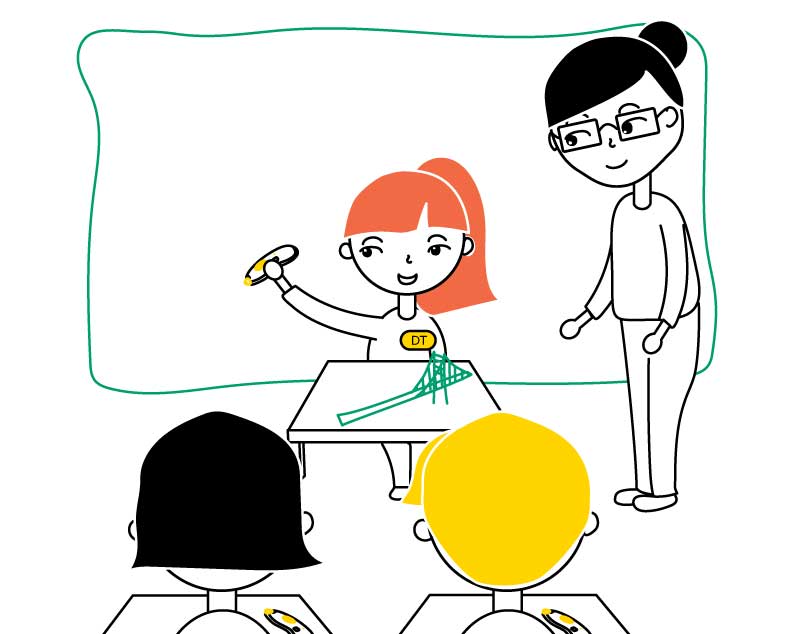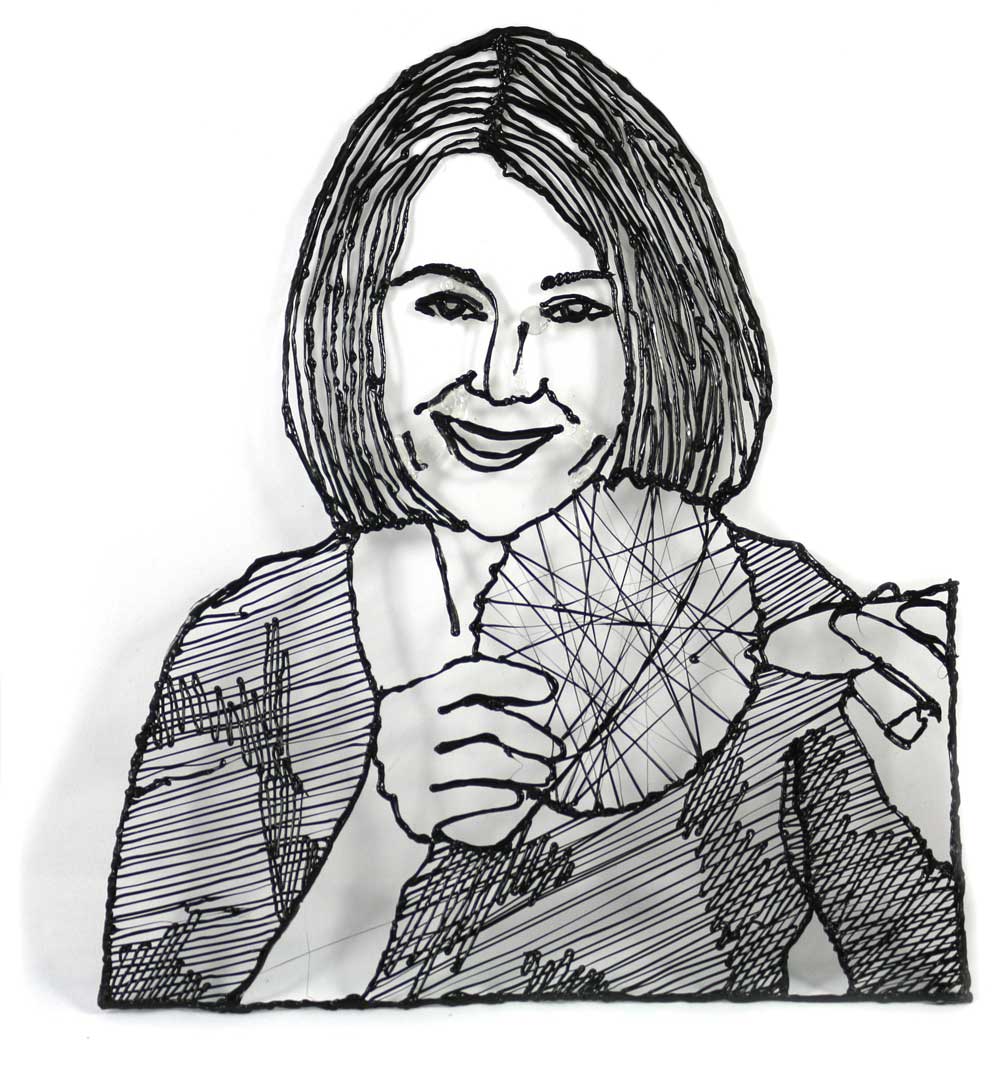There’s an oversized, gold and garishly ornate throne inside my classroom. While those who sit upon its red, velvet pillow feel quite special, they know that this seat comes with awesome responsibility.
All eyes turn towards the seated as he or she communicates ideas, feedback, and skills. And, it has become increasingly clear to me that the throne is a symbol of the need we all have to teach one another. It’s an important analogy regarding how we should avoid setting up our classroom as a monarchy; and should rather aim for teaching as a democracy in which everyone has something important to teach others.
With this in mind, I trained a core group of third through fifth grade students as Doodler-Teachers (DTs) whose mission has been to spread their passion for doodling, while instructing younger peers in the art of doodling. Here are some of the manifold benefits we’ve reaped through peer-teaching doodling.

1. Individualized Doodling Instruction:
Whether teaching new doodlers at a maker faire or inside a first-grade classroom, one small group of intrepid DTs can conquer the masses, in ways that a sole monarch, (aka teacher), cannot. Teaching a new hands-on skill to primary students can sometimes feel like a game of whack-a-mole, with one teacher frantically running from student to student, as another 5 call for help. Each DT can focus on a smaller group, allowing the teacher to enhance his or her role as a facilitator and guide, while assessing and meeting the needs of the group.
2. Active Doodling:
Ben Franklin was a pretty wise man, who I’m sure, if he had had the opportunity, would have loved doodling. It’s almost as if he had doodling in mind when he said, “Tell me and I forget. Teach me and I remember. Involve me and I learn.” Modeling how to doodle is just the beginning. The next step is guiding and catching your young doodlers when they fall. The only way to do this is to place a 3Doodler in their hands and actively guide them as they doodle. Real-time feedback is much more powerful than after the fact.

3. Two-Way Doodling:
It’s a double win. While new doodlers are learning, the DTs are also reaping rewards. Great epiphanies are reached when students become the teachers. They empathize toward the instruction and betterment of others. Connections are made, as students realize how much doodling relates to all sorts of learning. Confidence is enhanced beyond the doodling session. “I didn’t think I could do it,” said one third-grader who initially doubted her doodler-teaching abilities,. “Teaching is hard,” she admitted, “but it’s fun, too!”
4. Doodle-Talk:
And, while teachers are the virtual chameleons of the classroom, engaging with all types of learners, I have found my third-grade DTs, who were themselves, first graders, only a year or two earlier, are the best at connecting with their younger pals in ways that even the coolest teacher cannot. And, while your students respect and admire you (I’m sure), there’s something much cooler about hanging out with a fourth grader, when you’re a first grader! It was during one doodling session that I observed a first- grader look up into the eyes of third- grade DT and say, “You’re so good at doodling! Much better than me!” The response was honest and made me smile. “You can do it, too. I’m not good at math, but that’s because I don’t practice it as much. I’m a good doodler, because I practice it a LOT!” The first grader’s expression said it all. She happily returned to doodling with a huge smile, too.
Peer teaching empowers those students who sit in the throne, as well as the peers they teach. Helping one another solves a multitude of problems. It opens up possibilities for students to learn responsibility and practice being leaders, while enabling their teachers to enhance the learning experience for everyone in the kingdom!





